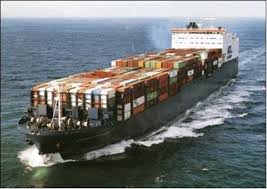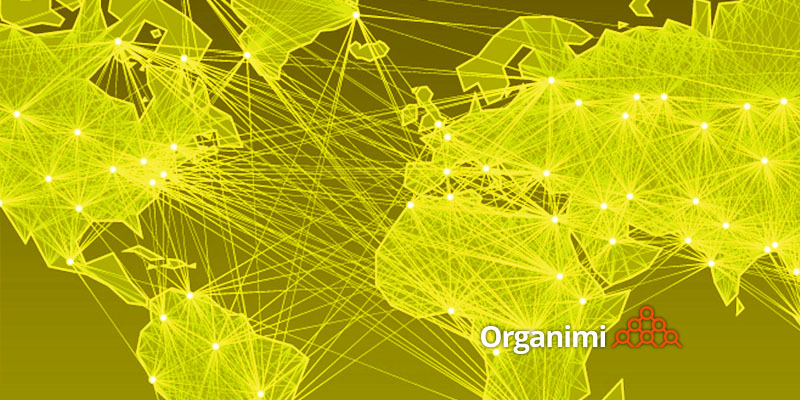The best known form of the “Serenity Prayer”, attributed to American Theologian Reinhold Niebuhr and in common use since the 1930s, may be familiar to you:
God,
grant me the serenity to accept the things I cannot change,
the courage to change the things I can,
and the wisdom to know the difference.
Acceptance. Courage. Wisdom.
These qualities would seem to be increasingly important these days. When you think of acceptance, does the word suggest resignation, or do you feel a sense of optimism about future opportunity?
We are experiencing profound change in the world around us – the obvious changes we see, as well as the unobtrusive ones we may barely notice or feel. Many of them feel difficult to accept.
The “Brexit” referendum, the US 2016 presidential election, resistance to new trade agreements such as the TPP and CETA, concern in many quarters about an ascendant China and its impact on Japan, Taiwan and south Asia, Aleppo, the Ukraine, the popularity of Germany’s edgy Borat style dark comedic film Look Who’s Back — these and countless other examples reflect the zeitgeist of our times: increasing stress, fear, anxiety, xenophobia, isolationism, nationalism, protectionism, all originating with change. Knowing the darkness of our past, but having a strange longing to retreat there. The list goes on.

National incomes are again growing modestly, but household income and wages have been stagnant for many of us for a decade, with health care costs taking a growing share of GDP as the global workforce ages. Below the surface, according to political economist Nicholas Eberstadt in his book Men Without Work: America’s Invisible Crisis, an even more profound shift is under way. He describes the rise of the “unworking” class, heralded by 7 million idle American men between 25 and 34 years of age who he describes as no longer looking for work or ashamed of not being employed – an epic collapse in job participation rates with significant economic, social, moral, political and spiritual consequences. He writes about America, but the phenomenon is undoubtedly global…an unintended consequence of our globalized, technologized world.
Among those working, job growth in many economies has recovered from the recession of 2008, but the quality of jobs and the size of pay checks a decade later speaks to a world of relatively less for many, compared with earlier decades. And as we have noted in previous blogs, the rise of the peer to peer economy – of shared cars, shared beds, shared lives typified by the likes of Uber and AirBnB – speaks to the needs of many to generate new sources of supplementary income and further reduce their costs – bypassing traditional institutions and creating new marketplaces in the process.
Digital currency is now officially past the mid point of displacing paper currency, the lifeblood of economies for hundreds of years. But what does money even mean any more, when so much is held by so few and for no apparent useful purpose? Major economies are flush with liquidity, while billions of dollars sit unused on business balance sheets – famously labelled as dead money by Bank of England Governor Mark Carney. Meanwhile at the other end of the spectrum massive expansion of consumer debt is happening against a backdrop of (for how much longer?) record low interest rates.
In a recent feature on life in Rockford Illinois, reporting in the Globe and Mail, business correspondent Joanna Slater, commented:
“If you ask economists about the causes of that stagnation, they answer with a long list. There is the accumulated impact of technological change, the effects of globalization and trade, the weakening power of unions, the decline in worker productivity, and the mismatch between the education people receive and the jobs available. The anxiety is real and it’s justifiable…but the reasons for it are complex.”

What do all of these changes mean for your organization?
In a recent article highlighting “the end of globalization”, Boston Consulting Group writers Arindam Bhattacharya, Hans-Paul Bürkner, and Aparna Bijapurkar describe the fourth phase of globalization we are now experiencing, defined by accelerating adoption of digital technologies and a shift in governance away from traditional institutions, rules and norms for management of the global economy to a more decentralized governance structure.
For the past 200 years, globalization has been defined as the increasing integration of the rest of the world with Western countries through the flow of money, goods, services, and people. The twin forces of digitization and decentralization are tearing apart this old model of globalization. The market—and the opportunities—remain global, but the challenges are vastly more complex than ever before.
The familiar model of a single economic pole, a dominating technology, and a single system of governance is being replaced by a multipolar, diverse world. Companies will have to deal with a multiplicity of economies, governance organizations and rules, and technologies. Global integration will no longer occur only through physical highways. Instead, invisible data highways will be the new roads and shipping routes, and cloud storage will be the new shipping containers and warehouses.
They summarize five key themes
- Adopting A New Strategic Framework – a shift in strategy away from a global headquarters and global optimization mindset to a focus on local maximization based on assessing the characteristics of local markets and the ability of their governance institutions to support and promote growth.
- Adopting A New Corporate Mindset – supporting evolution of the organization through the development of capabilities needed to thrive in a business and political environment of greater complexity, diversity and decentralization.
- Adopting New Business Models – shifting from large-scale, high-productivity logic of global optimization and standardization to symmetric organizational models, structures, and processes that are specific to industries and countries and responsive to local rules and regulations.
- Adopting More Sophisticated Risk Management Capabilities – shifting in emphasis from risk mitigation oriented to financial, project and natural disaster risks, to shifts in the political landscape, the rise of national interests, state capitalism, sovereign wealth funds, private capital markets and equity funds
- Adopting New Measurement Tools – track digital flows, the growth of global platforms, the ease of access to specialized skills, and the growth and reach of state capital. They will also need to balance traditional metrics that measure global optimization with country-centric metrics that measure their footprint and penetration across countries.
It is clear that for organizations to be successful, they will need to rebalance and further decentralize their operations to reflect local market realities and opportunities, tap new communities more successfully, improve their onboarding and retention programs for workers with the skills they need, and focus on “upgrading” the skillsets of their personnel to address the challenges of operating in this environment. In addition to the needs for improved skills in innovation and the creation and management of digital technologies and data, many of these positions will emphasize a mix of hard and soft intellectual skills, like active listening, leadership, communication, analytics, and administration competencies.
How does an organization adopt a more decentralized structure, or find, track, nurture and develop these capabilities among individuals?
One approach which seems particularly popular in the “STEM” domains (science-technology-engineering-math), for both technology companies and the traditional industry players being disrupted by them, is to “go where the talent is”, with organizations witnessing clear performance benefits from locating (and in some cases relocating) entire activity areas to “clusters of capability” where these transformative skills can be more easily tapped.
In past blogs, we have also noted an alternative view – redefining the organization itself, as evidenced by the rise of virtual teams, virtual organizations and remote working relationships. These structures are focused less on physical location, and more on finding and engaging skills wherever they may be situated. While both approaches co-exist, organizations of all types confront a common challenge – gathering, tracking and harnessing the unique skills and capabilities of their members. Put more simply, organizations find it hard to assemble and maintain a complete and up to date inventory of their people capabilities.
In a recent Harvard Business Review article, We Need A Better Way To Visualize Peoples’ Skills, Michelle Weise advocates for wider use of such tools, focussing on competency grids, using the popular code sharing site GitHub as her best practise example. She is seeking to address the current imperfect methods by which organizations seek to track and maintain updated inventories of the capabilities of their personnel. She advocates using more dynamic, real time systems to track relevant information, so that these skills can be harnessed to achieve organizational objectives:
Competency grids demonstrate precisely what people can do: This person can apply financial principles to solve business problems; this person can write memos by synthesizing data from multiple sources; or this person can evaluate web resources. As more and more knowledge work ends up online and in the cloud, creating GitHub-type profiles for a broader range of activities becomes increasingly feasible and automatable….
Better people analytics – and better ways of visualizing and interacting with that data – will not only help managers and recruiters do a better job of matching people with jobs but will also help each of us develop a more accurate picture of our strengths and weaknesses. We’ll be able to send clearer signals to the market about all that we can do.
Which brings us to where we are at at Organimi. As part of our overall focus on creating great org charts that are simple to create and easy to share, we continue to enhance our capabilities to gather, track and display relevant information about all the members of your organization so that it is easily accessible, available and understandable.
Version 4.2 has made it easy to quickly create organizational charts that can organize teams and provide their basic profile information regardless of where they are located. In the process we have offered some basic customization and sharing tools to permit organizations to easily identify, track, recognize and share the skills of their teams wherever they might be.
Our next release, Version 4.3, takes this process further, with enhanced data importing, sharing, printing and formatting tools that will make it even easier to customize your org charts, photoboards and directories; in the process making it easier to identify, track and manage the skills and capabilities of your teams – easily, visually, intuitively.
With our recently announced application programming interface, Organimi will be moving further in the direction of enabling users to create competency grids and other forms and applications that extend these capabilities to help organizations better understand, accept, acknowledge, organize and leverage the capabilities of their people.
Using Organimi, you will be able to discover, track and visualize the actual skills of everyone in your organization – however you define its boundaries – making it easier to harness them to achieve success for you, and better outcomes for your team members.
There is a lot of change happening in the world, and not much any of us can do about it. But acceptance does not need to define or defeat us. What we can do, with wisdom and courage, is prepare our people to be agents of constructive change, by first understanding and then harnessing the skills and capabilities they can bring to the challenges confronting all of us. At Organimi we hope to be able to help our customers meet that challenge.
As always, thanks for reading
The Organimi Team

